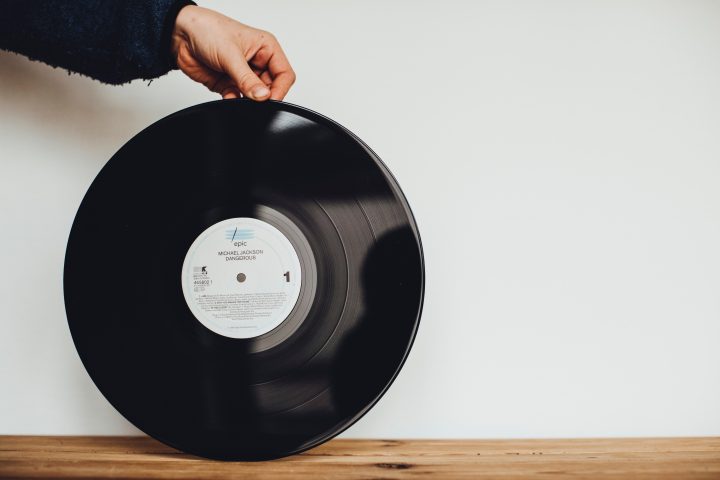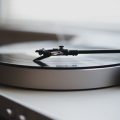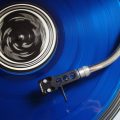Looking to get the low down on that pesky turntable hum that’s been troubling your listening experience?
Then step forth and explore these 4 solutions and see if they can be of help!

Table of Contents
- What Causes Turntable Hum?
- Technique 1: Grounding with Ground Wire
- Technique 2: Moving Wires Around
- Technique 3: Moving Speakers
- Technique 4: Solo Preamp
- Final Tones
- FAQs Turntable Hum
What Causes Turntable Hum?
The kind of hum sound or buzzing sound that can affect the listening experience on a turntable will no doubt be due to a fault in the wiring of the RCA cables.
A good way to test whether the issue is in the cables and turntable or if it is in the amplifier is to set the amplifier to all the different inputs. If the buzzing noise persists on settings other than the turntable, then you have a different issue at play likely to do with the ground loop. If, on the other hand, the hum occurs when the input is set to the turntable, then it is most likely a fault with the turntable wiring.
A built-in phono preamp can, however, also cause issues of this kind, so if you are using shielded wires and other high-quality audio components and still hear a sound coming from the stereo system, then it might be worth inspecting this preamp.
Investigating such an issue can be difficult, especially if the preamp is part of the turntable itself. Thankfully, most turntables will offer the option of disengaging the built-in preamp at the back, usually indicated by a button that says LINE.
Often, many people just choose to grin and bear this turntable hum rather than invest a whole bunch of money on other audio components. If you cannot hear the hum while there is music playing, then you shouldn’t find it too difficult to learn to live with it, unless, of course, you are some kind of audiophile audio purist.
Such is the lot of the proles, sadly, where cheap wiring and build quality that leaves a lot to be desired can make it difficult or even impossible to eliminate hum of this kind.
Technique 1: Grounding with Ground Wire
Even if this isn’t the main issue with the turntable, it can be useful to learn how to ground a turntable for future reference.
Many turntables have a relatively small wire at the rear that is located near the RCA cable point. Properly grounding a turntable in this way is a great way to ensure that you are connected properly and removing as much background hum as possible.
Go ahead and buy some ground wire (like that shown below) and attach it to the GND screw that you have located at the back of the turntable. Once you have connected these things properly, hopefully, the sound will have rectified itself.
Indeed, if there is a preamp built into the turntable, it is less likely for there to be a ground hook with which to connect. If there is a switch on the back of the turntable that says PHONO or LINE, then chances are your turntable has a built-in preamp, something that you can bypass by a mere flick of the switch, though you will need your own one in order for your audio system to work.
If your turntable doesn’t have a ground wire or ground hook in this way, you can always place a metal screw underneath the table and try connecting a piece of speaker wire to another metal screw elsewhere on the receiver. Achieving a sturdy metal-to-metal connection between the turntable and the receiver can create its own ground loop and thus rid the whole of as much noise as possible. You can even use gaffa tape in the same way!
Technique 2: Moving Wires Around
It is not uncommon for the back of a stereo system to be much akin to a bird’s nest, riddled with intersecting wires and obtuse relations between stereos and receivers. Indeed, even if you were to use shielded cables – which many beginners are loath to do – you are likely to receive some level of interference from all of these adjacent cables, simply by the fact that they are there.
Indeed, such adjacent interference rears its head in the form of a 60-cycle hum, otherwise known as a 60-hertz hum, otherwise known as a constantly annoying buzzing sound coming from the speakers. Such sounds are more likely in older equipment, though it is still there as a faint hum no matter how new your gear is.
To curb this, you might try to organize the back of your stereo system a little more, endeavoring to sort them out and ensure that they are not crossing paths or lying adjacent to one another – at least not as much as they were before.
Even if you are only testing it out to see whether or not this is the primary cause of the ever-present hum, it is still a worthwhile venture to organize your stereo setup like this. In a similar way, you can also try and plug the turntable into a different plug in the wall, otherwise putting some distance between your stereo and other electronics in your living space.
Technique 3: Moving Speakers
Perhaps your speakers are simply too close to the turntable? It can be easy to neglect the lot of the stylus on a turntable. In a lot of ways it does much the same work as a guitar pickup or a microphone, only they transfer the vibrations physically against their surfaces, transmitting this vibrational data out through the cartridge and onward toward the preamp, amplifier, and then the speakers.
Indeed, even the best microphones (like this Neumann condenser microphone pictured below) are still prone to feedback loops. This is an audio-visual phenomenon where sound is sent into a microphone, out through some speakers, and then picked back up by the microphone again, gradually becoming louder and louder until it reaches its volume limits.
Such a thing can also affect a turntable when too much of the audio from the speakers is then picked up by the stylus. Since the stylus deals with kinetic vibrations, then the sound will be transmitted by close proximity, and the raw sound sent forth through the stylus into a feedback loop. Stephen Hawking demonstrates this in his interesting Mad Scientist Paradox.
If you suspect this is the cause of the background hum, try moving the speakers a little further away from the turntable, as much as you can preferably. Then, you should be rid of the background hum for good.
Technique 4: Solo Preamp
If none of the other techniques thus far have elicited the results that you seek, then perhaps it might be time to invest in a preamp of your own, one that isn’t built into your turntable but rather that operates on its own.
There are a whole bunch of preamps for turntables to choose from and the one eventually choose will no doubt be chosen for a) the financial value and b) the sonic value.
Those looking to operate on a little bunch of a budget might try something like the Pyle Phono Preamp PP555 (pictured below) or the Pro-Ject Phono Box DC.
If you are working from a little more of a budget, then you might feel flush and decide to go for something a little more expensive like the Pro-Ject Tube Box S2 (pictured below) or the Rega Fono Mini A2D MKII. The former is a stellar example of a tube phono preamp that isn’t ashamed to exhibit the tubes in question.
Final Tones
So, there you have it! Hopefully, you have managed to solve the issue as much as possible.
FAQs Turntable Hum
How much turntable hum is normal?
Most audio equipment will exhibit some hum of some sort, purely because there is rarely if ever a pure electrical signal that is without fault in its grounding and delivery of service. If the sound is disturbing your listening experience, though, then you will want to get it checked out.
Why does my turntable hum when I touch it?
If the hum increases with human contact, then it is likely that the metal shield in the cartridge is not properly grounded for connection.
Why does my turntable hum increase with volume?
Usually because it is inherent to the signal, increasing with the increase in signal overall.









